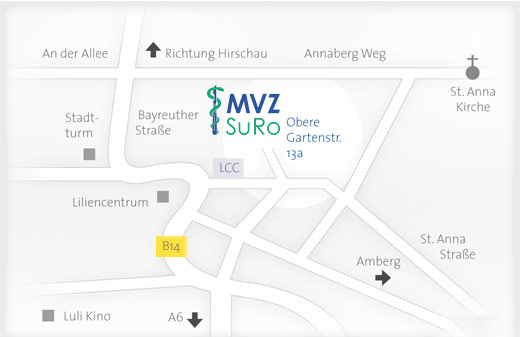Cause
CTS is caused by a “nerve entrapment” in the wrist area (narrow passage, pressure on the nerve). The carpal bones and a ligament stretched over these bones form a narrow channel there for the affected nerve, the median nerve. The exact cause of entrapment of this nerve is unknown. However, manual labor, injuries, especially fractures in the wrist area, and pregnancy are thought to be contributing factors.
Symptoms
CTS is initially most noticeable at night. One wakes up because of pain in the fingers that radiates to the wrist, sometimes to the elbow and shoulder. At the same time, there is tenderness of the thumb, index and middle fingers. The thumb-side half of the ring finger is also affected. In the advanced stage, patients have difficulty grasping and objects fall out of their hands. Finally, patients notice a marked reduction of strength in their hand and the disappearance of the thumb ball muscles.
Therapy
Non-surgical treatment (night splints, cortisone injections, ointments, tablets) does not promise lasting success. Surgical treatment has very good results. This involves cutting the carpal ligament through a 3 – 4 cm skin incision between the ball of the thumb and the little finger (open surgical method). This gain of space results in a pressure relief of the nerve. In addition, with the open method, the nerve can be freed from tissue adhesions (neurolysis). In our opinion, endoscopic surgery (“closed” surgical method, “keyhole surgery”) offers no real advantages. On the contrary, it has the disadvantage that it is not possible to free the nerve from adhesions.
The open surgery we perform is a simple procedure that can be performed on an outpatient basis and even at an advanced age. The patient does not receive general anesthesia, but only regional (arm only) or local anesthesia. The complication rate is well below 1%. Mobility and resilience of the hand are fully regained after 3 – 4 weeks.


